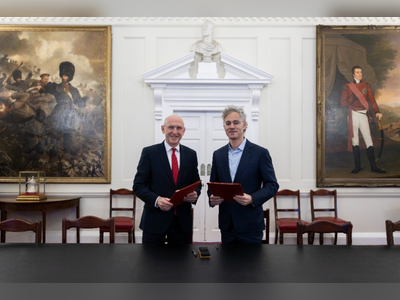Transformative Changes in Women's Wrestling: The Rise of WWE Superstars
In February 2015, a pivotal moment in the history of women's wrestling occurred when a Divas Tag Team match in WWE ended in just 29 seconds. This match, featuring lesser-known wrestlers, ignited a movement for change that would eventually redefine the treatment and representation of women in professional wrestling. The outcry from fans, encapsulated by the hashtag #GiveDivasAChance on social media, demanded respect and better opportunities for female athletes, marking a significant departure from a legacy of humiliating portrayals and superficial storylines.
Historically, WWE's women's division was branded as the 'Divas,' a term that connoted objectification rather than athletic prowess. Significant moments of disrespect, such as the 2009 'Miss WrestleMania' segment, exemplified this trend, where a male wrestler, Santino Marella, dressed as a woman won the competition, reinforcing perceptions of women as mere props within the wrestling narrative. During this era, women's matches often received minimal airtime, occasionally lasting only a few minutes.
The turning point came in April 2016 during WrestleMania, WWE's marquee event, where the Women's Championship belt was unveiled. The main event featured three key figures of the women's revolution: Becky Lynch, Sasha Banks, and Charlotte Flair. Their 17-minute match served as both a symbolic rejection of the Divas gimmick and the introduction of a new era for women's wrestling—one characterized by legitimacy and skill. Becky Lynch, in particular, emerged as a transformative figure, adopting the moniker 'The Man' to assert her equality and dominance within the sport. Her ability to connect with fans led to her becoming the first woman to headline WrestleMania, solidifying her status as a superstar.
Recently at WrestleMania 41, held two weeks ago, the women's matches garnered significant attention, with a triple threat bout involving Bianca Belair, Iyo Sky, and Rhea Ripley receiving accolades for its technical superiority. The event continues to reflect the increasing prominence of female wrestlers, going beyond mere participation to leading events.
Since 2015, female wrestlers have seen their earnings increase dramatically—reportedly multiplying by five to ten times. Notably, Ronda Rousey secured a contract worth $1.5 million per year, while Becky Lynch became the top merchandise seller for WWE in 2019. The current landscape sees multiple women's matches occurring each night, with average match times exceeding nine minutes, a far cry from the previous limitations.
The organizational culture has also shifted, with more women taking on roles behind the scenes. The number of female officials, producers, and behind-the-camera personnel has risen by over 300%, reflecting a commitment to inclusivity and representation in all facets of WWE.
Additionally, WWE has experienced a surge in success, reporting revenues of $1.4 billion in 2024—its highest ever. A recent partnership with Netflix, allowing for a 10-year deal worth $5 billion, further indicates the company's growth and global outreach, featuring women's wrestling prominently in promotional materials.
In this evolving context, individual wrestlers like Rhea Ripley and Liv Morgan have emerged as leading figures. Ripley, with an annual salary estimated at $6 million, exemplifies the newfound recognition of women as key attractions, while Morgan, transitioning from a side character to a main event talent, has also begun pursuing opportunities in Hollywood, indicating the crossover appeal of these female athletes.
The changes in WWE's women's division represent a fundamental transformation in how female wrestlers are perceived and compensated. With ongoing developments suggesting continued growth, the landscape of professional wrestling is being reshaped, confirming the sustained impact of this revolution.










